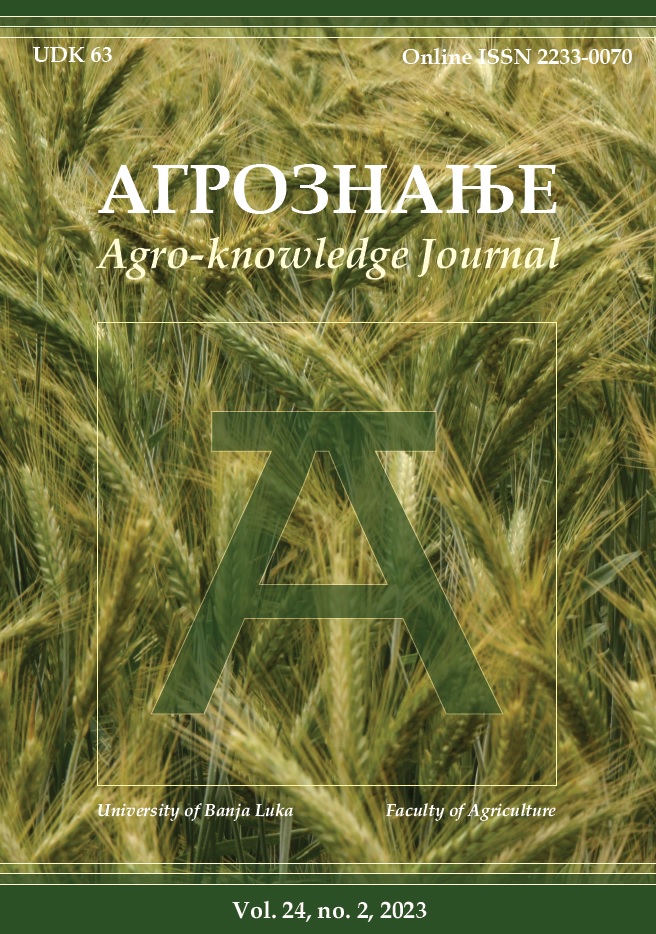Physicochemical and sensory parameters of black locust and chestnut honey quality
DOI:
https://doi.org/10.7251/AGREN2304179BAbstract
Black locust honey is produced from nectar collected from the Robinia tree (Robinia pseudoacacia). It has light yellow colour, very light and neutral fragrance, and smells of acacia blossom. It has a medium-sweet to very sweet taste, which is fairly to very long-lasting. Its aroma lasts for a short time and it slowly crystallizes. Chestnut honey is produced from nectar or collected from the sweet chestnut (Castanea sativa). Honey is dark brown with a red tint colour, dark colour depends on the region and year, and its aroma is very distinctive with extremely characteristic bitter taste. It rarely crystallizes. This paper presents the characteristics of quality black locust and chestnut honey produced in the territory of Bosnia and Herzegovina in the period 2012-2015. The study included 31 samples of honey. Laboratory testing of black locust and chestnut honey were carried out in accordance with the rules of the Ordinance on Honey and other Bee Products (Official Gazette of B&H, No. 37/09) and the EU Directive 2001/110/EC; CODEX STAN 12-1981. Indicators of quality (water content, electrical conductivity, total acidity, pH, hydroxymethylfurfural (HMF), and colour) and sensory properties of honey were determined. It was found that patterns of black locust and chestnut honey classified according to years showed certain variability in the physicochemical and sensory characteristics.

